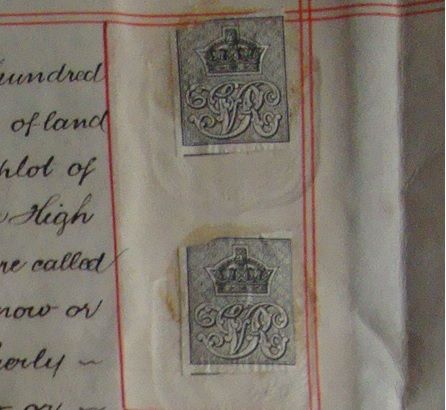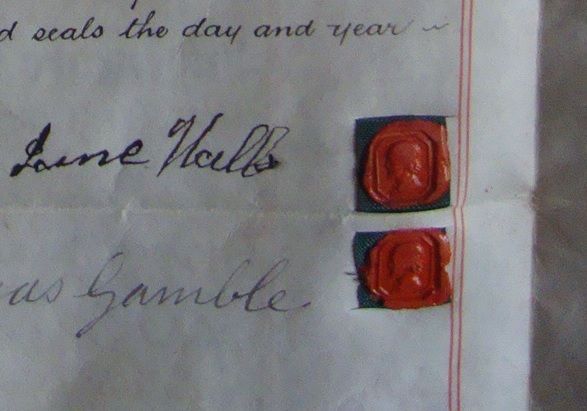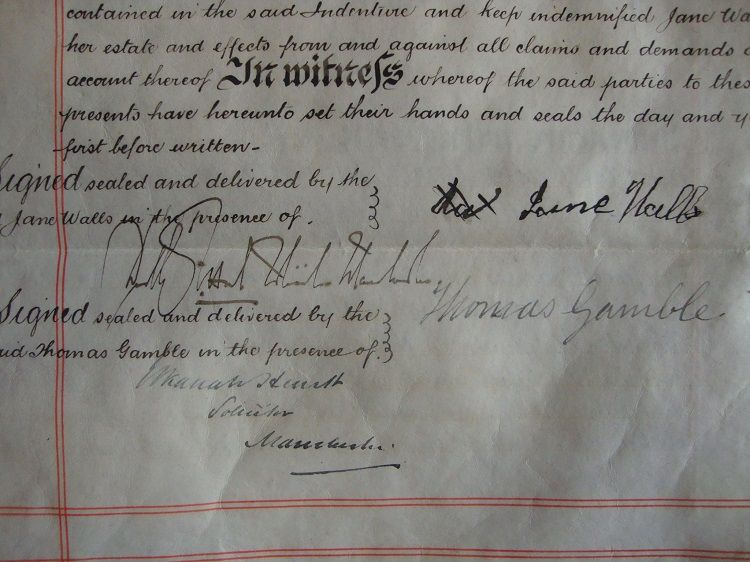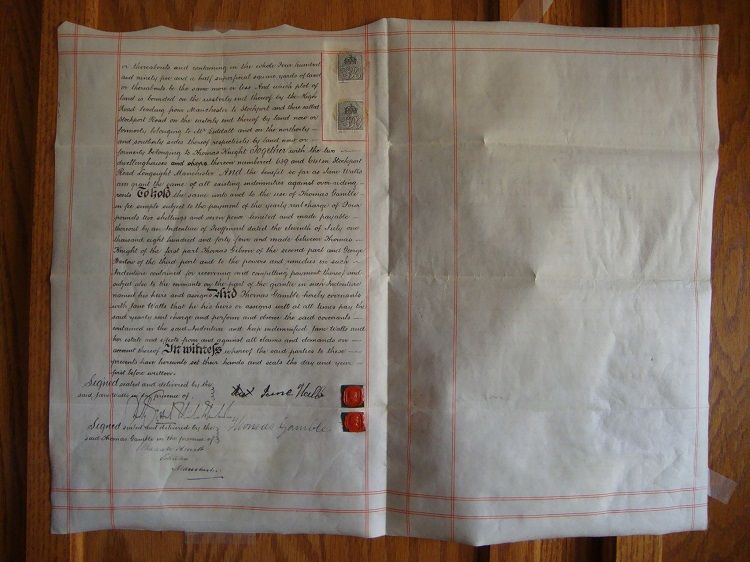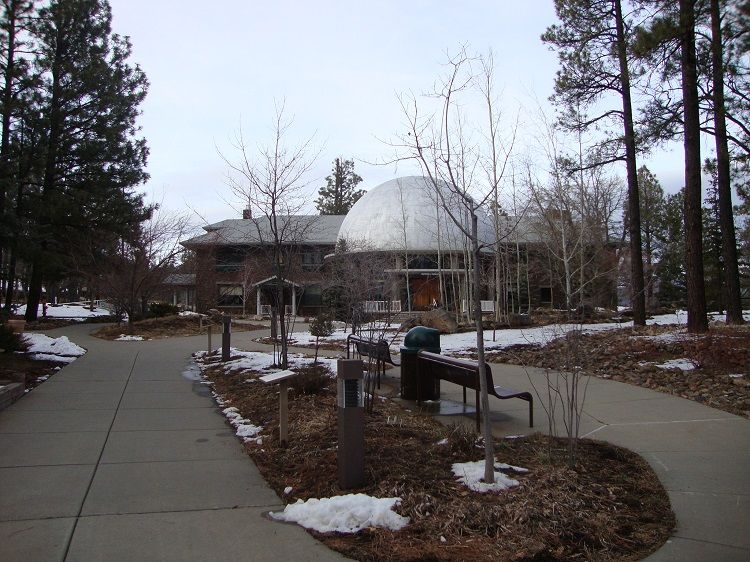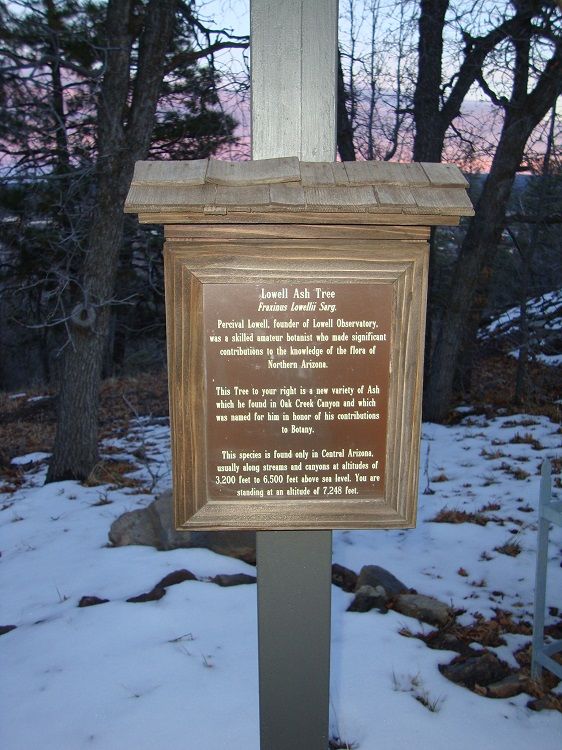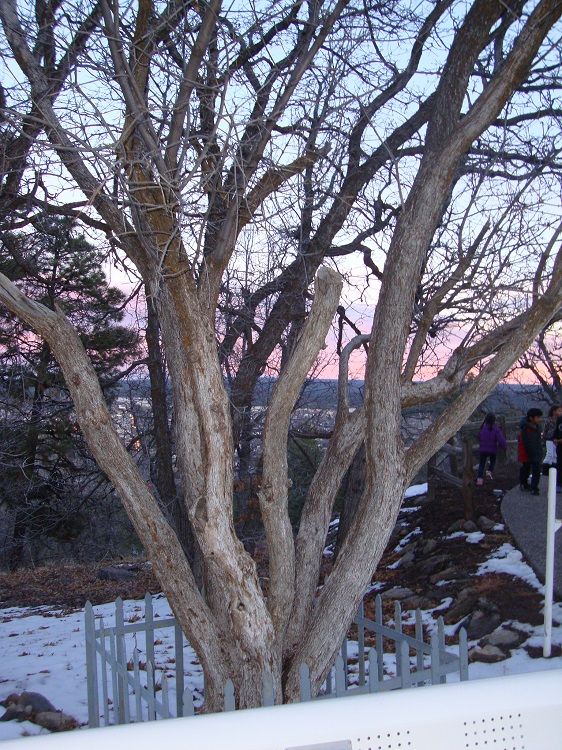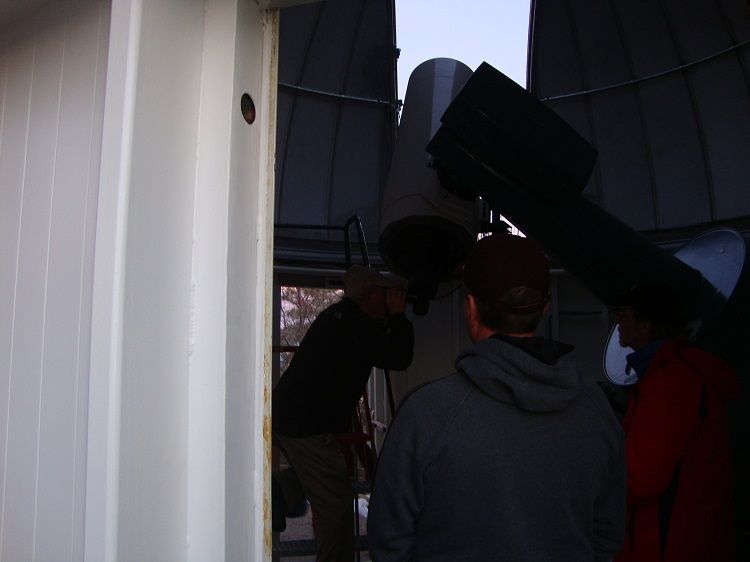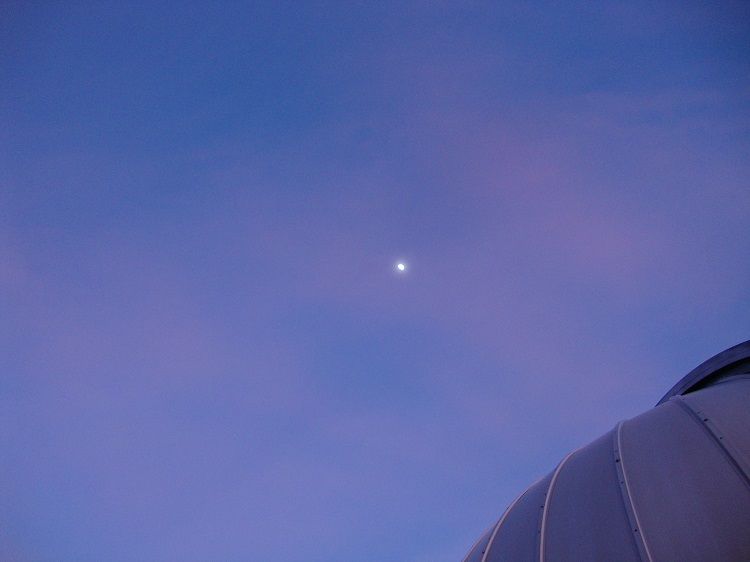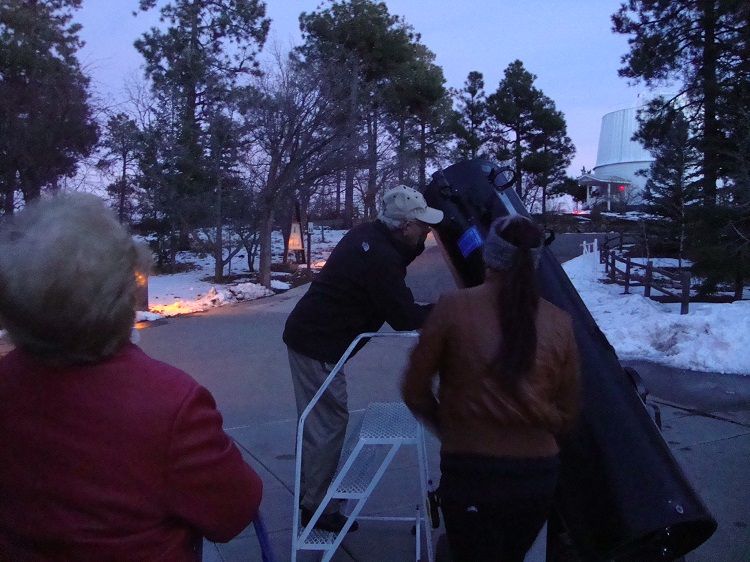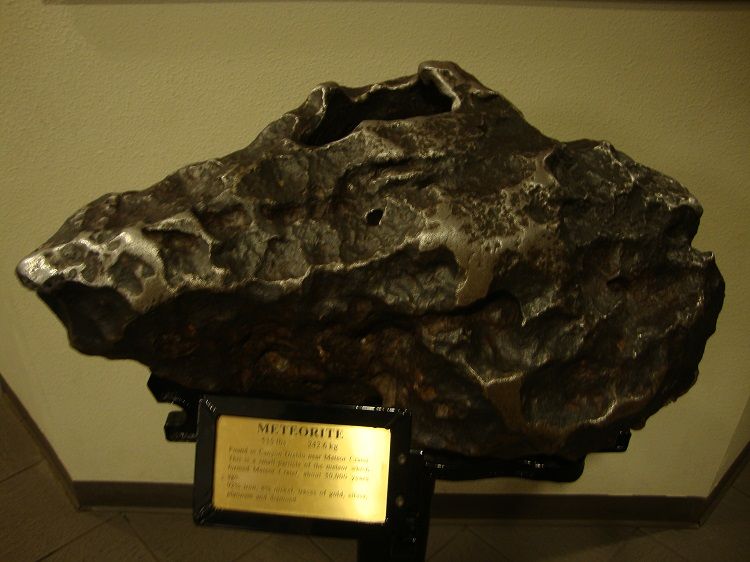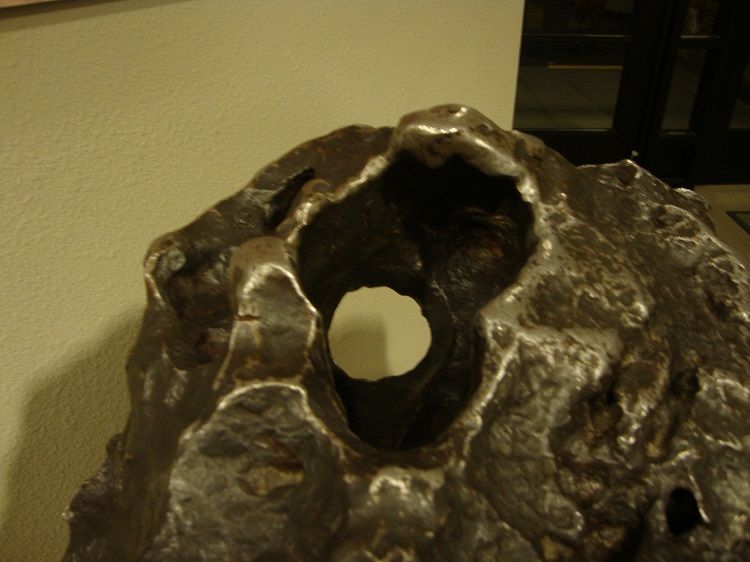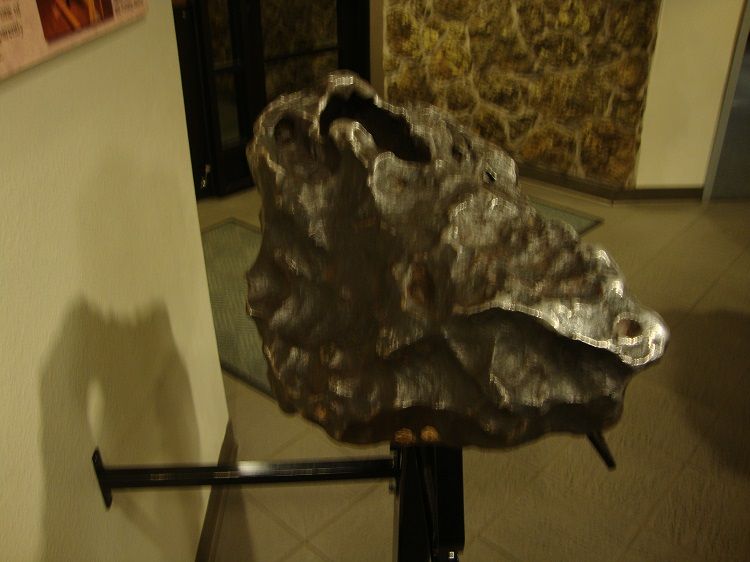In the almost twelve years
since I moved to this beautiful state of Arizona
(has it really been that long?!!???!!!?!) I had yet to visit the Lowell
Observatory in Flagstaff. Recently, Dad was here for about 2 – 2 ½
weeks in February and we finally made it up there, a place we had both been
meaning to visit for quite some time. It
seems whenever I’m in Flagstaff
there was always something else I was doing or I was there with a group of
friends.
When I first moved here Dad
was coming to Phoenix
quite a lot which was one of the main reasons I moved here. He came here so often that he had a little
place in Mesa
because it was more convenient than renting hotel rooms. He came here quite often to ride motorcycles
with people that he knew who lived both here in Arizona
and North Dakota
(snowbirds). My aunt and uncle, who have
now both passed away, also owned a home here at one time. He doesn’t ride cycles here anymore but he
still comes here fairly often to visit.
When he comes to visit I
usually drag him all over Arizona
but this time, in addition to spending time with me, he wanted to visit with
some old friends that live here. I
remember some of them from when I was a child.
I was also just getting over a nasty cold/sore throat/earache and was
busy with some work-related issues. But
we were still able to spend some time together.
We spent some time in Sedona and Flagstaff as well as Scottsdale when we
went walking around Old Town Scottsdale before heading to downtown Phoenix so
that Dad could see the new World War II Memorial at Wesley Bolin Memorial
Plaza.
The day we went to the Lowell
Observatory we had headed up to Sedona to just kind of wander around and go
where the wind took us, so to say. We
had someone else with us who had not seen Chapel of the Holy Cross so we went
there first.
We then went to the Open
Range Grill and Tavern for lunch followed by, of course, a trip to the gourmet
ice cream shop. While sitting there, Dad
mentioned that he’d like to head up to the Lowell Observatory so we called to
get the usual information and received a message informing us of the hours of
the tours among other information.
Because of the time, we knew we had missed any of the tours but decided
to head up there regardless. We took the
scenic route and ended up there around sunset.
One thing I was a bit disappointed about is that we missed the tour of
the Pluto Telescope Dome which houses the telescope used to discover Pluto in
1930 as the Pluto Telescope Dome is open for daytime guided tours. I plan to go back sometime to see this.
Because I hadn’t researched
the Lowell Observatory before I went, I wasn’t really sure what to expect. I guess I thought there would be one big,
modern building with a number of telescopes through which one could observe the
night sky. It was anything but that, but
I was pleasantly surprised. It's a beautiful and interesting place and we ended up seeing the Moon, Jupiter (along with its four largest moons Io, Europa, Ganymede, and Callisto) the Andromeda Galaxy, and the Orion Nebula. Fascinating! The staff and volunteers were also very knowledgeable and receptive to questions. For anyone who is even remotely interested in astronomy, I would highly recommend a visit to the Lowell Observatory.

This is the first building we saw after parking. When we first entered, we were told that they couldn't guarantee what we would see in the night sky and that it was dependent upon the weather/cloud cover. Of course, given that we had taken the time to drive there, we took our chances and paid the small entrance fee. The building you see in this picture is called the Steele Visitor Center. From the brochure:
"The Steele Visitor Center opened in 1994 and is the public's gateway to the Lowell Observatory campus, programs, telescopes, exhibits, and gift shop. Here you can also learn about the Discovery Channel Telescope. The Steele Visitor Center is open to the public 361 days and 248 nights per year."
While waiting for nightfall, we attended a program in the Rotunda Museum. From the brochure:
"The Rotunda Museum originally contained the Observatory's science library and today features exhibits. The Rotunda is open for daytime guided tours. The rest of the building is closed to the public."
This is the main room inside the Rotunda Museum. This is really an interesting building. There is a warm, cozy, and comforting feeling about it. In this picture, you can see a spiral staircase that leads up to a collection of old books. There is another spiral staircase directly across from it on the other side of the room that leads up to another collection of old books. Due to the curvature of the ceiling, the closer one gets
to the center of the room the "stranger" their voice sounds. I say
strange because it isn't really an echo, but more of a "tinny" sound.
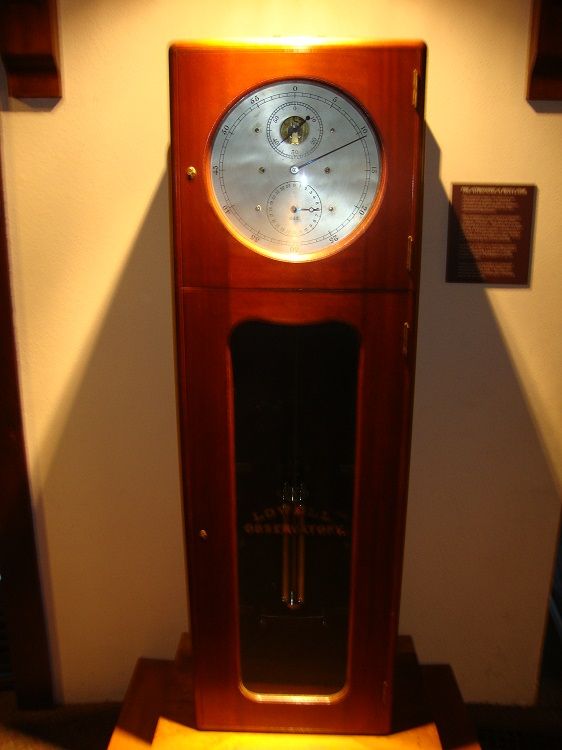
The sign next to this reads:
"THE ASTRONOMICAL REGULATOR
This precision clock, also known as an astronomical
regulator, was used for accurately timing photographic exposures and measuring
star positions and other astronomical phenomena.
This instrument was purchased in 1904 from the E.
Howard Clock Company of Boston. Originally set up in the library of Percival
Lowell’s residence on Mars Hill, the 400-pound regulator was moved on January
1, 1917, into the new “main building,” today known as the Slipher Building. It was used here for the next several
decades.
Each day at 10:00 a.m. local time (noon in Washington D.C.), a Lowell staff member would calibrate the regulator by
calling Western Union in Washington
to get the 12:00 p.m. tick.
A battery-powered switch was connected with wires
strung from tree trunks to the 24-inch Clark
Telescope. This allowed astronomers an
accurate means of keeping time at the telescope."

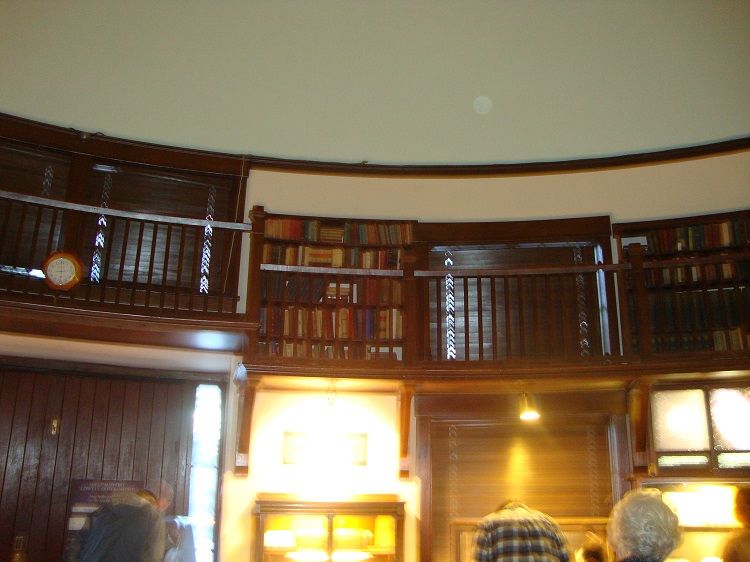

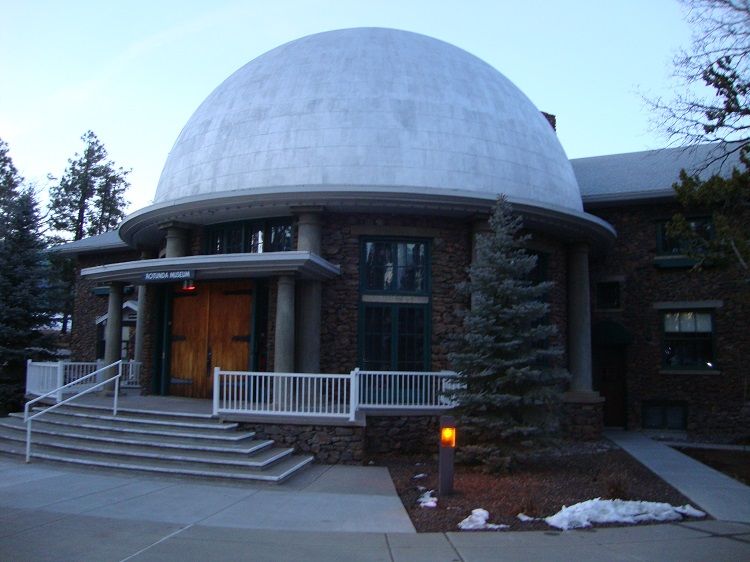

This is the Clark Dome Weather Station. We took a peek inside and were able to see the massive telescope. The sign outside reads:
"CLARK DOME WEATHER STATION
Understanding and predicting local weather patterns
helps astronomers plan successful observing runs. Because of this, observatories such as Lowell typically maintain
weather stations to monitor the conditions.
One such station was set up at the Clark
Telescope dome when it was permanently placed at this site in 1897.
Instruments for the station were enclosed in an instrument
shelter, which shielded thermometers, hygrometers (to monitor humidity), and
other devices from the Sun, precipitation, and other sources of heat and light
that could produce inaccurate readings.
This type of shelter features downward-pointing louvers that allow for
air flow while shielding the instruments from heat and light.
This weather station was removed in the latter part of
the 20th century, but a modern station is now mounted on top of the Clark Telescope dome.
Can you see it? Look for the
anemometer (for detecting wind speed), whose wind cups may be spinning."
From the brochure:
"Built in 1896, the Clark Refracting Telescope is the centerpiece of any visit to Mars Hill. With this telescope in 1912, V.M. Slipher discovered the first evidence of the expanding universe. The dome is the oldest standing building at the Observatory and was constructed by local bicycle repairmen Godfrey and Stanley Sykes. Since the 1970s the Clark Telescope has been used exclusively for public education. The dome is open for daytime guided tours and evening telescope viewing." (Note - We were unable to go inside and, at the time of our visit, the telescope appeared to be taken apart.)
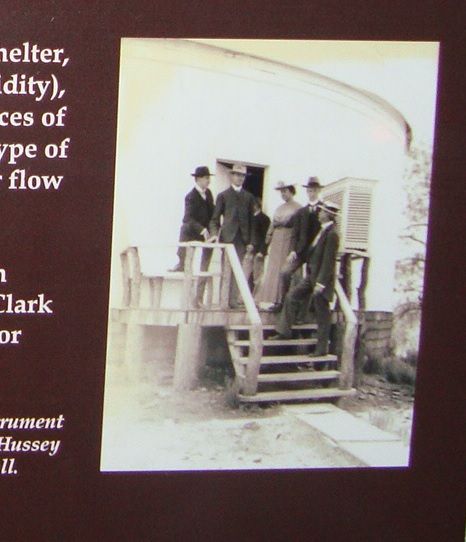
This picture was a part of the sign outside the Clark Telescope Dome. Pictured from left to right are the staff at the entrance of the Clark Telescope Dome:
John Duncan, V.M. Slipher, Harry Hussey (partially hidden from view), Wrexie Leonard, Carl Lampland, and Percival Lowell.
On the way to the McAllister Telescope through which we would view the moon and, later, the Orion Nebula, we passed by Percival Lowell's Mausoleum. From the brochure:
"Constance Lowell designed the mausoleum after Percival's untimely death in 1916. The base consists of New England granite and the dome of inset cobalt blue glass tiles. Please feel free to walk down the steps and view the mausoleum from the small yard below."
This sign reads:
"LOWELL ASH TREE
Fraxinus Lowellii Sarg.
Percival Lowell, founder of the Lowell Observatory,
was a skilled amateur botanist who made significant
contributions to the knowledge of the flora of
Northern Arizona.
This tree to your right is a new variety of Ash
which he found in Oak Creek Canyon and which
was named for him in honor of his contributions
to Botany.
This species is found only in Central Arizona,
usually along streams and canyons at altitudes of
3,200 feet to 6,500 feet above sea level. You are
standing at an altitude of 7,248 feet."
Overlooking Flagstaff, Arizona.
The sign on this building reads:
"Soda Acid Fire Extinguisher
For years, the only way to fight fire at the Observatory was with a soda acid fire extinguisher. This was a 30-gallon extinguisher on wheels that mixed water, soda and sulfuric acid (for pressure). It was once used to save V.M. Slipher's house from burning down, and also to fight forest fires. To keep the extinguisher from freezing in the winter, the room was insulated with sawdust and warmed with a 200-300 watt bulb. The thick door also helped hold in heat.
To see the soda acid extinguisher, press the button to the right while looking through the window.
Stone Water Tank
When Lowell Observatory was founded in 1894, the only way to get water up the hill was to haul it in 55 gallon drums using horse and wagon. Around 1901-1902, the Observatory built the circular water tank that is still located on the north side of this building. Water was pumped up from Flagstaff, and the 12,000-gallon tank held the Observatory's water until 1964, when a new tank was built a few hundred yards north of here, near today's Pluto walk."
This is Dad looking at the Moon through the McAllister telescope. We would return later on in the evening to view the Orion Nebula. From the brochure:
"The McAllister Telescope is a reflecting telescope with a Cassegrain optical system featuring a 16-inch (0.41 meter) primary mirror. The McAllister Telescope is used exclusively for public education. The dome is open for evening telescope viewing."
The lighting is a little bit better in this photo.
I took this photo of the grounds while standing by the McAllister Telescope.
This is a photo of Dad looking at Jupiter and its four largest moons. We were even able to see the bands on Jupiter. There was another telescope not far from this one that was pointed toward the Andromeda Galaxy. While it's true that the galaxy appeared only as a mass of cloudiness/fog, it was still fascinating to me as I was actually looking at another galaxy.
This meteorite is a cool thing to see. The sign on it reads:
METEORITE
535 lbs 242.6 kg
Found in Canyon Diablo near Meteor Crater. This is a small particle of the meteor which formed Meteor Crater, about 50,000 years ago. 92% iron, 8% nickel, traces of gold, silver, platinum, and diamond









